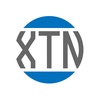In the realm of medical science, the integration of neurology with Health Information Technology (Health IT) through neural interfaces marks a revolution that's reshaping patient care. This cross-disciplinary innovation offers profound implications for the diagnosis, monitoring, and treatment of neurological disorders, and potentially, the enhancement of neural functions. As we stand on the brink of this new era, understanding the convergence of neurology and Health IT becomes essential.
Understanding Neural Interfaces in Medicine
Neural interfaces, or brain-computer interfaces (BCIs), are technologies that enable a direct communication pathway between the brain and external devices. In medicine, these interfaces are used to study the brain's activity and assist in restoring lost functions due to neurological impairments or injury. The technology operates by detecting signals from the brain, interpreting them via algorithms, and translating these signals into commands for medical devices or digital systems, bridging the human nervous system and computers in unprecedented ways.
The Evolution of Neural Interface Technology
The journey of neural interfaces has been transformative, from rudimentary models in the late 20th century to sophisticated systems integrated with artificial intelligence. Early interfaces were primarily research tools, limited by technological constraints. However, the 21st century has witnessed exponential growth in computational power, miniaturization of devices, and advanced signal processing, propelling neural interfaces into practical medical applications. From providing vision to the blind, to facilitating communication for the locked-in patients, neural interfaces are now tangible therapeutic tools.
Current Applications in Neurology
Today's neural interfaces find multifaceted applications within neurology. They are instrumental in:
Prosthetic Limb Control: Enabling amputees or paralyzed individuals to control prosthetic limbs intuitively with their thoughts, providing them with functional autonomy and improved quality of life.
Neurofeedback: Assisting in the treatment of disorders like ADHD and epilepsy by helping patients control neural activity.
Restoring Lost Functions: Empowering patients who have lost speech or movement due to debilitating conditions like ALS or strokes to communicate or perform tasks through devices controlled directly by their brain signals.
The Role of Health IT
Health IT's convergence with neural interface technology augments the latter's potential. Through advanced algorithms, data analytics, and secure patient data management, Health IT contributes significantly to the effectiveness of neural interfaces. By enabling the remote monitoring of neurological conditions through telemedicine platforms, integrating real-time brain signal data into Electronic Health Records (EHRs), and leveraging machine learning for personalized treatment, Health IT is indispensable in modern neural interface applications.
Ethical and Security Considerations
The blend of neurology and Health IT, while promising, brings complexities concerning ethics and data security. Issues such as patient privacy, consent, and the potential for neural data hacking require urgent attention and resolution. Additionally, the prospect of enhancing human abilities beyond their natural state through neural interfaces prompts ethical debates around equity, access, and societal implications.
Future Perspectives
Looking ahead, the nexus between neurology and Health IT through neural interfaces holds transformative potential. Anticipated advancements include:
Enhanced Integration: Increasingly seamless integration between the human brain and computers, potentially expanding to cloud-based neural communities and thought sharing.
Treatment Revolution: More comprehensive and efficient treatment methodologies for neurological conditions, minimizing invasive procedures and optimizing recovery processes.
Cognitive Enhancement: Potential development beyond restorative applications to the enhancement of human cognitive and sensory capabilities.
Conclusion
In the burgeoning field of healthcare technology, where the marriage of neurology and Health IT is paving the way for groundbreaking advancements, companies like Holon Solutions are carving out unique spaces. Holon, inspired by the concept of unity and being part of a larger system, stays true to its name by pioneering a distinctive approach that emphasizes the human element amidst technological advancements in healthcare services.
As neural interfaces revolutionize patient care by bridging minds and machines, Holon complements this transformative journey by rekindling the human connection that forms the essence of caregiving. Their sophisticated platform stands out, not just as a testament to technological innovation, but as a beacon that guides the sector back to its roots: human-centric service. By transcending traditional healthcare IT offerings, Holon provides tailored tools that simplify complex processes inherent in modern medicine.
Holon Solutions champions this cause with its proprietary sensor technology that intelligently aggregates patient data from various sources. This ingenuity ensures that while machines learn from human physiological data, healthcare professionals continue to learn from human experiences, freed from the administrative shackles that often inhibit such interactions. The integration of diverse data into customized clinical workflows mirrors the neural interface's function in neurology, creating a seamless stream of information that enhances rather than replaces the human touch.
In the labyrinth of healthcare providers striving to innovate, Holon distinguishes itself by targeting the Achilles' heel of healthcare: the administrative burden that leads to professional burnout. Their approach harnesses smart technology, embedding empathy into system design, reflecting a deep understanding of daily challenges faced by healthcare professionals. This strategy brilliantly complements the advancements brought by neural interfaces, as both domains of innovation share a common goal: elevating the quality of human life and interaction in the sphere of healthcare.
Central to Holon's philosophy is the creation of a community, much like the interconnected neural networks that thrive on healthy, consistent communication. The Holon Community, with its seamless data delivery and integration, doesn't just contribute to efficient operations; it plays a crucial role in rehumanizing healthcare experiences. It ensures that caregivers, supported by technology, can dedicate themselves to what machines cannot replicate – genuine human connection.
Innovation, within Holon, is not an abstract concept but a tangible practice, embodied in their Innovation Lab. It's a space that resonates with the frontier spirit seen in neural interface development. Here, exploration is limitless, ideas are bold, and the vision is clear. The emphasis is not solely on technological advancement but on enhancing every human interaction involved in healthcare processes.
As the medical field continues to embrace technological advancements like neural interfaces, it is the human-focused endeavors of companies like Holon Solutions that maintain the equilibrium, ensuring that healthcare, even at its most technologically advanced, remains a discipline dedicated to human service, empathy, and connection. Their commitment is a powerful reminder that in the pursuit of innovation, humanity must never become obsolete.


No comments yet